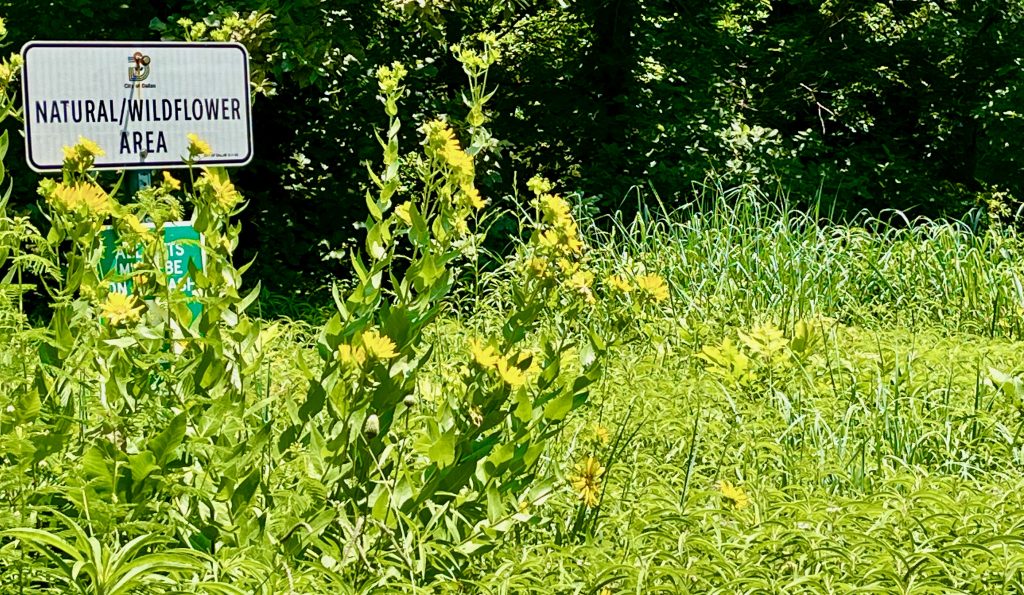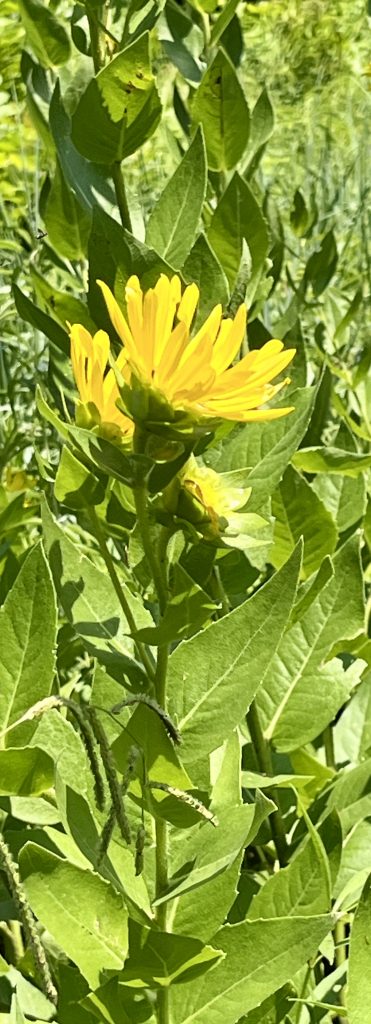
Entry Meadow: Behind the Stakes
by Amy Martin
Let’s talk a bit about the entry meadow behind the garden. It’s a mess, overgrown with brome grass that’s now gone to seed because the city did not respond to pleas to mow it. According to experts, if brome grass is mowed short for a few years, it greatly abates. Brome grass crowds out spring wildflowers and when the cool-season plant is spent it goes brown and flops down, ensuring summer wildflower seeds can not arise. But in the back of the meadow next to the trees, there are some fine wildflowers and native grasses that are mostly outcompeting the brome grass.
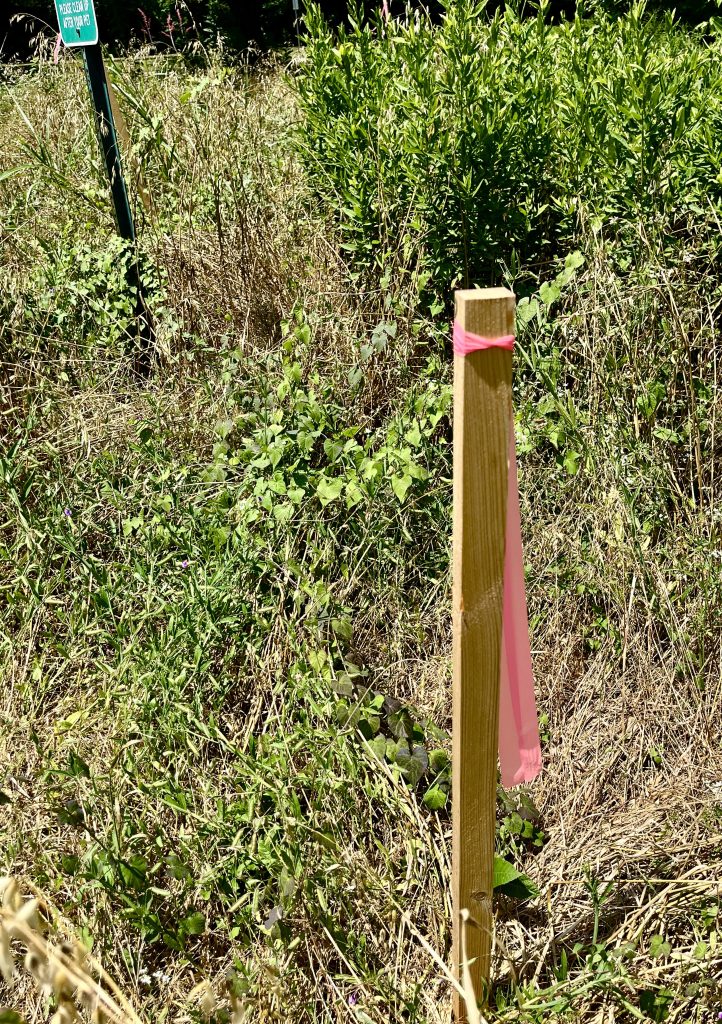
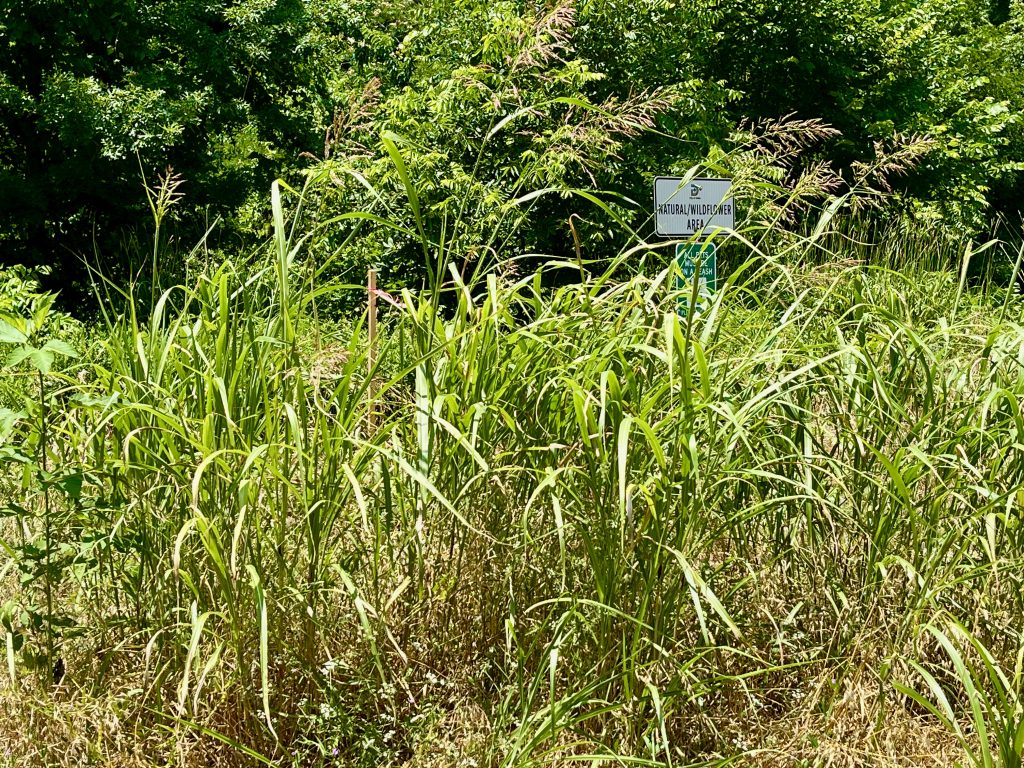
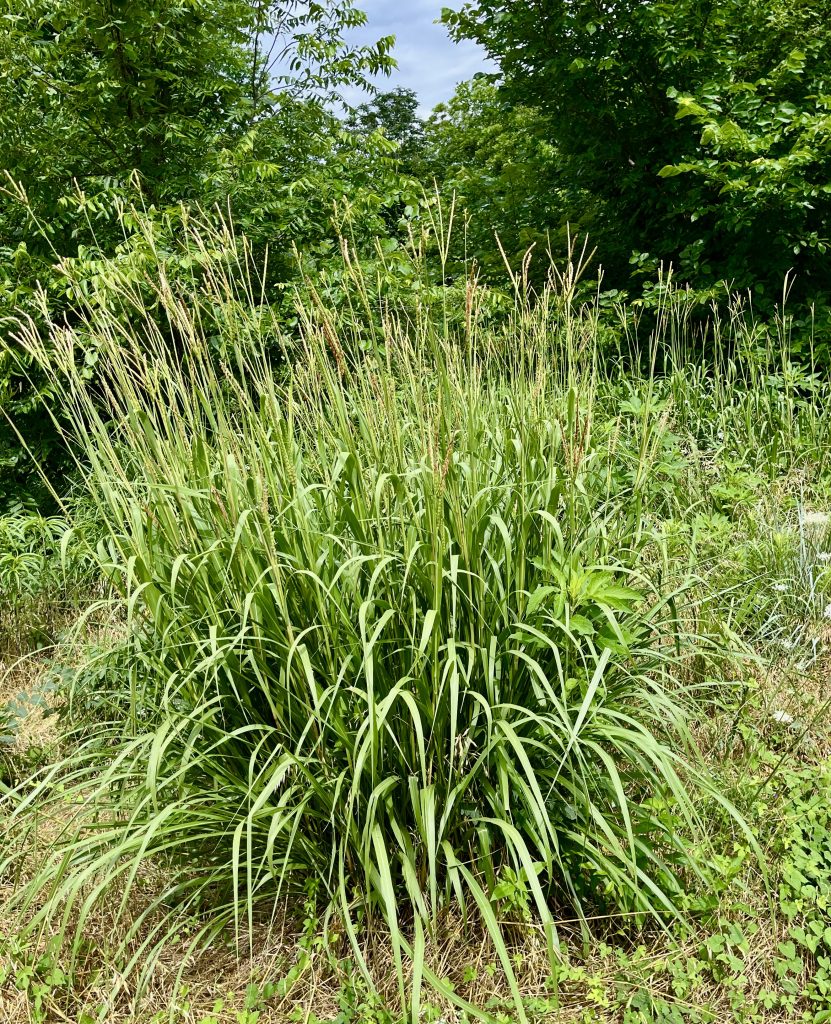
Big bluestem roots go several yards deep! That will also provide a thick barrier to help stem floodwaters from the entry area (except in major floods when the water backs up Dixon Branch, passes Peavy, and heads up Creekmere and Vinemont). When floodwater covers the entry meadow, it deposits invasive seeds like brome grass.
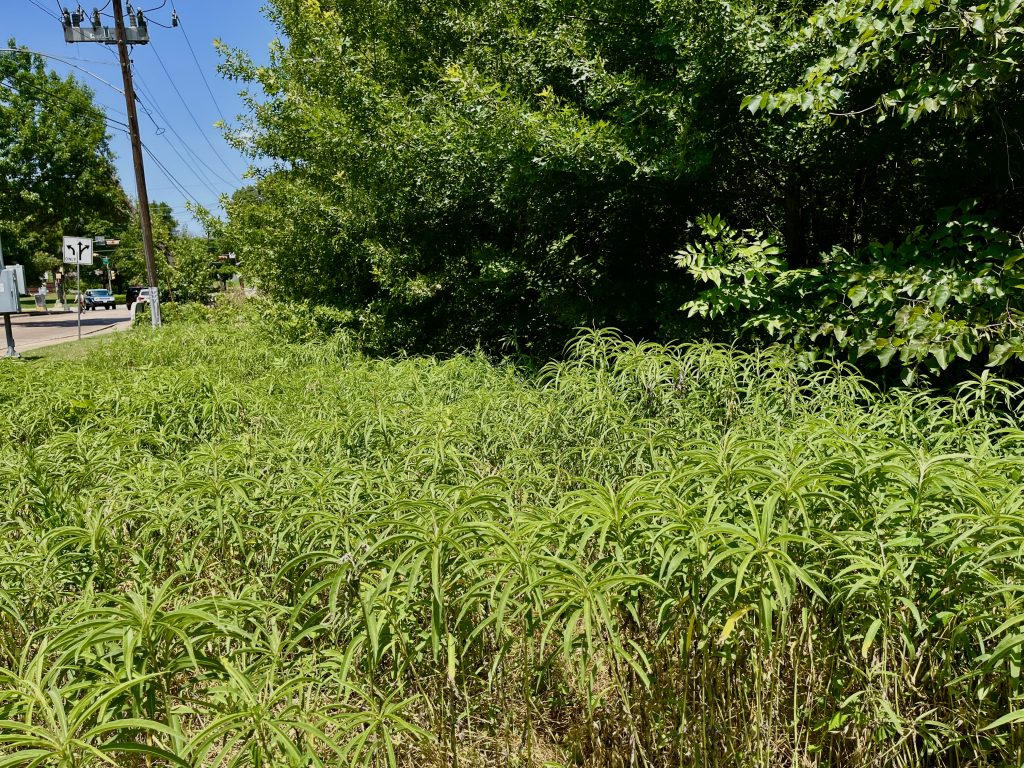

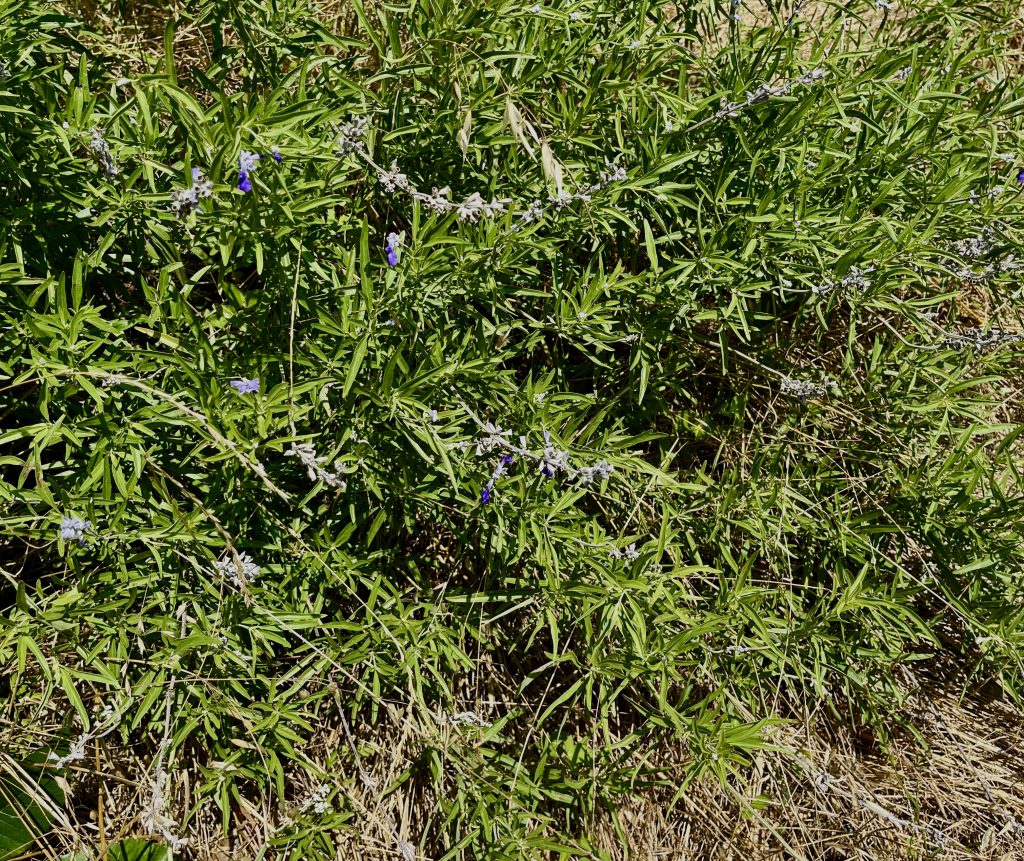
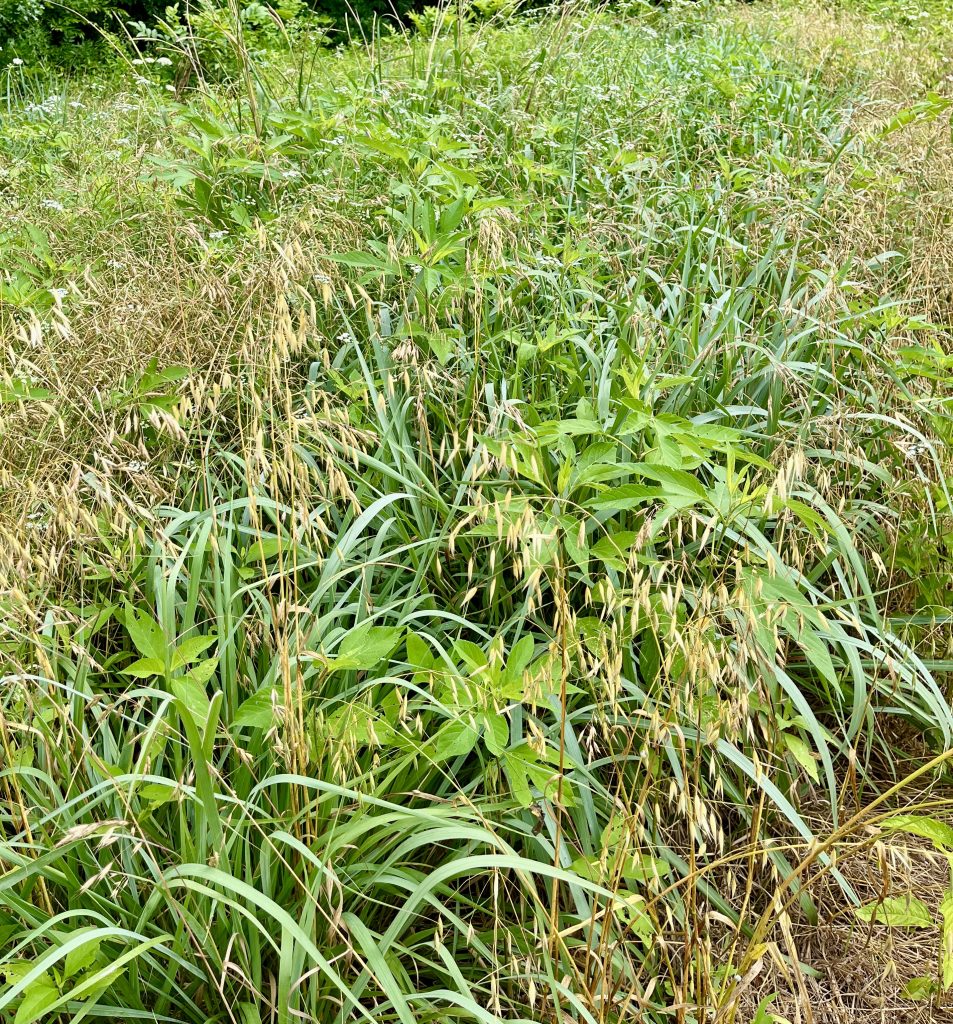
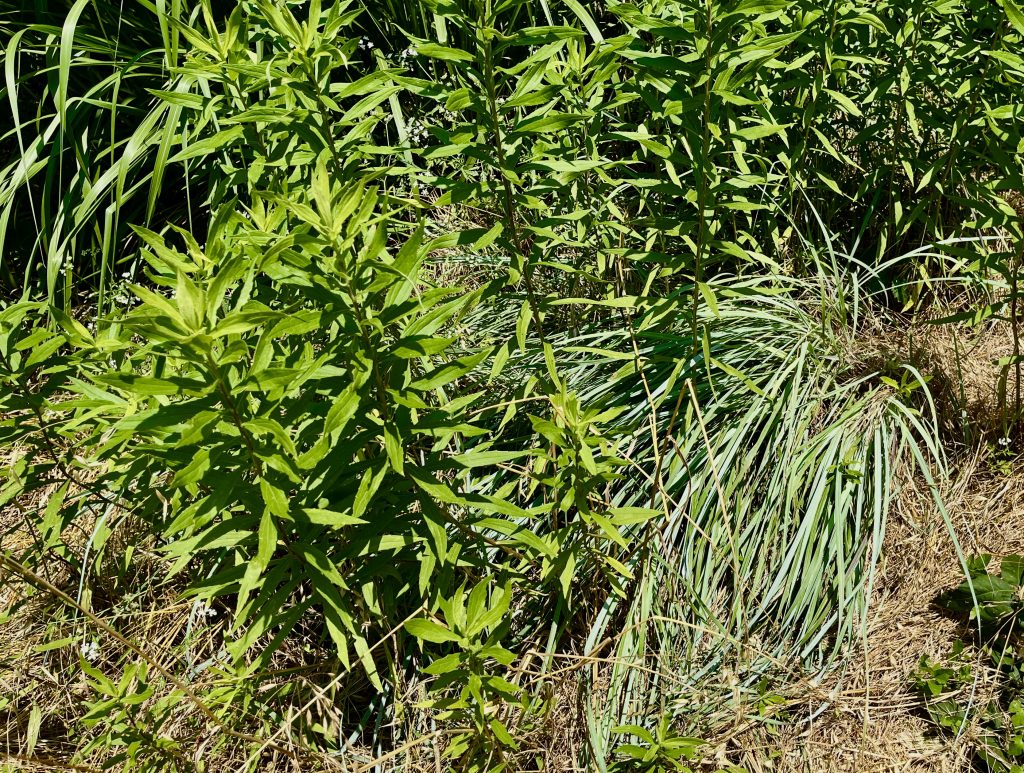
Goldenrod does not cause allergies because its pollen is not windborne. Giant ragweed blooms at that time and is the primary cause of “hayfever.” Unlike goldenrod, its insignificant blooms do not attract pollinators to carry the pollen around, so into the wind it goes.
If we can get more garden volunteers, I’ll have time to focus on the entry meadow and greenbelt. Volunteer!
While I’m blathering about plants, check out the corner of Creekmere and Sylvania.
